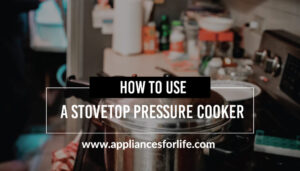- The worldwide acceptance of dishwasher units has revealed that they are not just home appliances for luxury. Dishwashers do not just help you turn those heaps of heavily soiled kitchenware into sparkling dishes/cutlery, they also make sure that they are more than 90 percent germ-free. Dishwashers are time-efficient and can also be really durable if they are used according to laid down guidelines.
- There are designated methods for the placement of dishes in the dishwasher unit, there are specific things you can not wash in a dishwasher, and there are some cleaning routines to stick to otherwise, your dishwasher will not last as long as it should. Find out in detail, the way to appropriately use your Blomberg dishwasher in this article.
How Dishwashers Work
Whether you are the inquisitive type or you are the type that does not really bother about how things work, you must’ve stopped, even for a split second to wonder how dishwashers work how they do. This is even more likely for those who constantly use their dishwashers. Well, if you belong to my category- the category of persons who wonder what happens on the inside of a dishwasher when it is closed then rest assured, you will finally get some answers.
Table of Contents
Toggle
Perhaps just like you, I used to wonder if dishwashers were just filled to the brim with water, constituting some kind of pool for dishes to bathe in however the operation of a dishwasher is similar to the operation of a car wash, especially with its in-built ‘sprinkler’ system.
Looking Inside Your Dishwasher
The major component of a dishwashing process is the water supply. To get water, the dishwasher pulls in water from your water supply via its external hookup. And eventually, when a cycle begins, water is pumped into a pool at the bottom of the dishwasher. Now, because another key instrument for clean and sanitized dishes is hot water, the water temperature in the dishwasher is increased to a level of about 130 degrees Fahrenheit to 140 degrees Fahrenheit, even though the heating does not happen instantaneously. It occurs gradually through the help of the heating element at the bottom of the dishwasher.
Almost concurrently, the heated water in the pool is mixed with some dishwasher detergent and sent into the spray arms or as I like to call it-‘the sprinkler system’ that is found throughout the dishwasher. The water surges through the spray arms and hits the dirty dishes, hopefully taking some nasty food stains with it.
It does not end here, the water drips back into the pool at the pool below where it is filtered and reheated. When this is done, the filtered and reheated water is then sent back into your dishwasher spray arms for it to be re-used. Once the water is heated, the heater automatically goes off, but the pumps continue pushing water through the spray arms. At the end of that particular wash cycle, all of the water is drained (that’s the gurgling sound you sometimes hear your dishwasher make), new, unused water takes its place, and the cycle begins anew.
The Three Stages of a dishwasher cleaning
1. Pre-Wash/rinse
This cycle is not intended for cleaning at all although hot water is supplied in the process. As a matter of fact, detergent is added to the heated water in some dishwashers but this is all for the softening of the food particles on your dishes thus preparing the dishes for a smooth wash. The pre-wash cycle is typically only a few minutes long.
2. Main Wash
This is the stage of actual washing. Here, water is supplied to the dishwasher, heated up, and mixed with some dishwasher detergent. After the mixture, it is pumped into the spray arms that are positioned throughout the dishwasher. The spray arms spray your dishes as soon as washing begins and when washing is done, the water used is then filtered to extract food particles and other dirt, reheated, and re-supplied into the spray arms for further use. At the end of the washing, all the water used is drained.
Depending on the cycle, the main wash can take anywhere from 20 to 60 minutes and may repeat multiple times throughout the cycle duration.
3. Final wash and rinse
This part pulls in new clean water and begins the heating/spraying/filtering/heating cycle anew. Just like the main wash, the heater is eventually shut off while the spraying continues.
The final wash/rinse may or may not use detergent. Like the main wash, the final wash/rinse can take 20 to 60 minutes and may repeat multiple times throughout the cycle duration.
Important Safety Precautions for Blomberg Dishwashers
When using a home appliance like a dishwasher, there are some dos and don’ts and precautions that one must strictly commit to if one would enjoy the durability guaranteed for Blomberg Dishwashers. After all, when one is ignorant about the appropriate usage of a particular product, its abuse is inevitable. Hence, a dishwasher like every other home appliance must be used according to the dictates of the user manual. When the information on the user manual is studiously followed, fire/explosion and damage risks can be significantly reduced. Worst-case scenarios of grave injuries and loss of life can also be avoided when safety precautions are taken at all times.
Precautions:
- Do not operate your dishwasher unless all the enclosure panels are properly in place. While making sure that all enclosure panels are properly shut, try not to tamper with your dishwasher controls.
- Whatever you do, do not the dishwasher or any parts thereof, a stool. This kind of use is apparently abusive hence it should be avoided at all costs. In addition to using a dishwasher appropriately, note that the cup racks are designed to support cups, glasses, and kitchen utensils. When the cup racks are in the dishwasher do not lean on or use the cup racks to support your body weight.
- Do not allow children to play anywhere near the dishwasher and get rid of Limescale and odor causing residue as often as possible
- Use only detergents or rinse aids recommended for use in a household dishwasher and keep them in a dry place out of the reach of children. Check that the detergent dispenser is empty after the completion of each wash program.
- Avoid frequent contact with dishwasher detergent on the skin and do not swallow or inhale it as this substance is made of alkaline and can cause some serious damage to the body. Needless to say, do not drink water from the dishwasher because it’ll contain harmful residues.
- Under certain conditions hydrogen gas may be produced in a hot water heater system that has not been used for two weeks or more. Hydrogen gas is explosive. If the hot water system has not been used for such a period, before using the dishwasher turn on all hot water taps and let the water flow from each for several minutes. This will release any accumulated hydrogen gas. As gas is flammable, do not smoke or use an open flame during this time.
- Items to be washed should be properly positioned so that sharp items will not damage the dishwasher door. Pay attention to the things to put and not put in a dishwasher
- Your dishwasher must be grounded. In the event of a malfunction or breakdown, grounding will reduce the risk of electric shock by providing a path of least resistance for electric current. This appliance is equipped with a cord having an equipment-grounding conductor and a grounding plug. The plug must be plugged into an appropriate outlet that is installed and grounded in accordance with all local codes and ordinances.
- Check the water supply line periodically. It is susceptible to breakage. It becomes less flexible as time goes by. Replace it immediately when it is torn, cut, swollen, or there is water leakage, and keep the dishwasher package out of the reach of children after unpacking it.
How To Use A Blomberg Dishwasher
1. Clean Off Excess Waste From Your Dishes
To begin your cleaning exercise, make sure to first scrape off food particles from your dishes. This activity does not only help your dishwasher clean very fast, but it also gives you the best cleaning experience. When large food particles and calcium are taken care of, your filter and drain hose will find their tasks completely easy to accomplish without any complications at all.
2. Load the Top and Bottom Rack
Dishes should be placed in the dishwasher unit in the prescribed manner. Firstly, dishes should be placed side by side in the racks in order to allow for the reach of water, coming from the spray jets. Cup utensils and plastics should be placed in the upper rack to protect them from the heating element at the bottom of the dishwasher. Knives and other sharp items should also be kept safely in the unit, facing down, to avoid cuts and injuries.
The bottom rack is for large kitchenware like serving platters, dinner plates, stainless steel pots, and baking dishes that are safe for the dishwasher, and should be placed on the bottom rack. Big pots and pans should be positioned along the sides or at the back.
Any utensils should be placed in the utensil basket and always make sure that sharp objects such as knives are facing down and that there is nothing blocking the wash arms.
3. Load The Dishwasher Tablets
No matter what detergent choice you make, always load the detergent into the detergent section of the dishwasher.
Learning how to use a dishwasher for the first time you might assume that a washing tablet could be loaded in the same way as a washing machine, but if a dishwasher tablet is placed at the bottom of a dishwasher, it would most likely dissolve too fast to be effective.
- Place the detergent into the detergent dispenser
- Add rinse aid to the rinse aid dispenser, making sure that it doesn’t go over the line
- Close the lid and press it firmly until it shuts with a click
4. Choose a Wash Cycle
For most dishwashers, there are three different cycles or more to choose from, and they are; the quick, normal, and heavy-duty wash cycles. The cycle you choose depends on the soil level of your dishes and the quantity of them.
To set the cycle click on the relevant button on the front of the dishwasher. A quick cycle will use more energy, water, and a higher temperature to get quick results, a normal wash cycle will clean everyday dishes well, whilst the heavy-duty cycle should be used only for dirty dishes and kitchenware that is heavily soiled and needs a more intensive clean.
All done.
5. Start the dishwasher!
Mistakes to Avoid When You Load Your Blomberg Dishwasher
Overloading: When you overload your dishwasher, you make it very difficult to wash effectively. This is so because, dishes stacked together may not have all its part touched by detergent or washing water. When there are fewer dishes, they will be easily saturated in warm water and detergent discharged by your dishwasher. More importantly, complete air circulation is more feasible with fewer dishes in your dishwasher. Hence, your dishes dry faster.
Too much or wrong detergent: If you use too much detergent or the wrong one, this may cause excessive suds and eventual streaks on your dishes. Detergent residue may even end up clogging the dishwasher itself. Hence, it is highly advisable to always advisable to apply the least recommended amount of detergent to your dishwasher. If this instruction is compiled, you may have to get a replacement for your dishwasher sooner or later.
Placing items incorrectly: Each rack in a dishwasher has its specific functions. Use each rack for the items they are designed to hold and position them properly to optimize access to water and detergent. If after all these attempts, items do not fit, you can adjust the racks by removing the removable parts. Note that there are items that should never be washed in a dishwasher. Pay attention to this so as not to destroy your unit
FAQs
How Do I Load a Blomberg Dishwasher?
To properly load your dishwasher is to understand that each rack therein is meant for specific kinds of dishes. Placing a particular dish in the appropriate rack can help prevent overcrowding, aids in washing and drying, and avoids damage to both your dishwasher and its contents. This section will review how to utilize each rack of your KitchenAid dishwasher but before we address that, let us consider some KitchenAid pre-washing tips.
What can I do to make my dishwasher clean better?
If you are looking for a better performance from your dishwasher, you must take precautions such as removing food particles from dishes before washing commences at all, running a pre-wash cycle if your dishwasher has that feature, and setting up your dishes in the appropriate ways to allow for easy contact with water and finally make sure that heating system is working perfectly. Your hot water must reach at least 130 degrees for effective sanitation of dishes.
My Dishwasher is not that old, why has it broken down already?
The average life of most appliances in recent years is about 8 to 12 years although it used to be about 10-20 years. Regardless, the cost of appliances around the world has increased significantly. And this is why one cannot just afford to joke about their maintenance guidelines. If you take necessary precautions to maintain and use your dishwasher appropriately, there is a high chance that it stands the test of time.
18 MINUTES
ESTIMATED TIME DESIGNING AND UPLOADING THIS ARTICLE
7 HOURS
ESTIMATED TIME RESEARCHING AND WRITING THIS ARTICLE
You Might Also Like

How To Stop Washing Machine From Shaking?
One of the most annoying issues you can ever face with your washing machine is constant vibration. To best deal with that, you’ll need to know how to stop washing machine from shaking, which is what we’ll be discussing in this article. Living in the

Rinnai V94XIN Tankless Water Heater (Product Review)
Rinnai is one of the best tankless water heater brands, and its five-year reputation has firmly established its products as unparalleled in the market. Recognized for innovation and reliability, the Rinnai water heater range exemplifies advanced hot water solutions. This comprehensive review delves into a

Best Juicers on the Market to Help You Live a Healthy Life
We know that you, like everyone else, are gravitating to a healthy life and that’s why we have for you the best juicers on the market in 2021. Because juicers have a fair deal to do when it comes to helping you lead that life.

Blenders today cover a range of tasks which would otherwise be difficult to create without this gadget. You can make soups, sauces, smoothies, cocktails, baby food and literally anything that needs to be blended down. By making these homemade dressings, sauces, soups and smoothies you

Best Blender for Peanut Butter
Peanut Butter contains more nutritional benefits than you think. From maintaining body weight to preventing heart disease, peanut butter can save your life by consuming it moderately. Unfortunately, how to make perfect peanut butter may always be a lingering concern if you do not get

The Best Rated Kitchen Faucets
When you are choosing the finishing touches for your kitchen such as appliances, faucets and worktops the first thing you look at is style, but is it good quality and good value for money? Our team has searched high and low best rated kitchen faucets for

How Long Can You Leave an Electric Stove On?
You need to activate all your safety senses when handling an electric stove. Is it safe to leave an electric stove on for a long time? How long can you leave an electric stove on? Let’s find out in this article. Most homeowners are usually

Black and Decker Hand Mixer Manual
Having a hand mixer in your kitchen is a blessing. However, what’s the point if you can’t get the best out of it because you don’t know how to use it? That’s what our Black and Decker hand mixer manual will be helping you solve.

How to use a stovetop pressure cooker?
Pressure cooking is a modern alternative to conventional form of cooking. Scientists have pondered on how to spend less time cooking without giving up some nutrients that are inherent in some delicacies. It has been discovered that pressure cooking does not only enhance your cooking,

Top 5 Best Washing Machines Under $600
With high-end washers growing very famous on the market, many people still pay attention to the budget-friendly ones because that’s all they can afford. If you fall in that category, we’ll be helping you review the best washing machines under $600 to help get the


